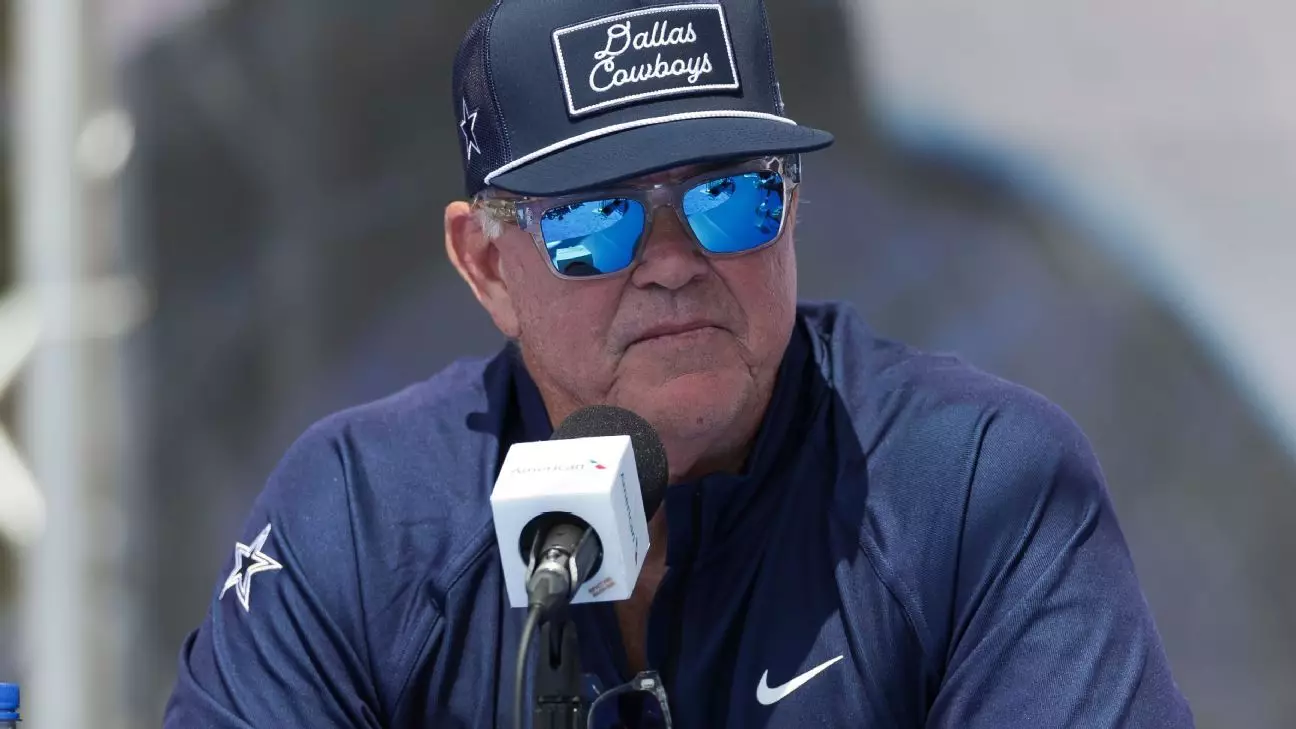The Dallas Cowboys, a team synonymous with high stakes and bold moves, appears to be transitioning from a philosophy of being “all-in” to one that can be defined as “selectively aggressive.” This shift in strategy suggests a calculated approach to enhancing the roster, which reflects a blend of prudent financial management and a keen eye on talent acquisition. As the NFL scouting combine unfolds in Indianapolis, the Cowboys’ hierarchy, led by executive vice president Stephen Jones, is keen to impart a proactive yet measured stance towards both the draft and free agency.
Understanding the Shift in Strategy
Last season’s “all-in” mentality, as articulated by owner Jerry Jones, often led to decisions that did not always align with traditional roster-building wisdom. However, this year’s emphasis on “selectively aggressive” measures indicates a return to a more strategic approach. Stephen Jones emphasized the importance of addressing roster needs prior to the draft, enabling the organization to select the best available player, irrespective of position. This careful balancing act not only aims to bolster immediate team strength but also positions the Cowboys to build for the future.
The essence of this new philosophy lies in its flexibility, recognizing that each offseason presents unique challenges and opportunities. The Cowboys are poised to reassess their needs and align them with available resources, whether that means tapping into the free-agency pool or leveraging their draft picks effectively. In a league characterized by constant change, the Cowboys hope to strike a balance that garners both short-term success and long-term sustainability.
One of the primary objectives for the Cowboys heading into 2025 is securing a long-term deal for All-Pro pass rusher Micah Parsons. Currently, Parsons is on the fifth-year option of his rookie contract, making it imperative for the Cowboys to initiate discussions about an extension. The strategic negotiation of Parsons’ contract is crucial not only for the team but also sets a precedent for how they prioritize their investments in star players.
Reflecting on past negotiations, Stephen Jones recounted the team’s experiences with key players like quarterback Dak Prescott and wide receiver CeeDee Lamb. The timing of these extensions last season was less than ideal, with negotiations extending deep into the offseason. While each contract is unique, the Cowboys would undoubtedly prefer to complete these discussions earlier in the offseason to avoid any potential distractions or disruptions to players’ training and team cohesion.
In addition to fostering relationships with current stars, the Cowboys face the prospect of key departures as veterans grapple with the ramifications of retirement and free agency. Offensive lineman Zack Martin’s impending retirement paves the way for a significant roster shakeup, especially with defensive standout DeMarcus Lawrence also approaching free agency. If Lawrence re-signs, he would become the longest-tenured player on the roster, representing continuity amidst change.
Moreover, financial strategies such as restructuring contracts will allow the Cowboys to open significant salary cap room. By adjusting the contracts of Prescott and Lamb, the organization may create approximately $57 million in space, which will allow for more flexibility in pursuing player agreements and potential trades. Amidst an evolving salary cap projected to increase to over $280 million, the Cowboys find themselves in a position to invest intelligently in their roster.
As the Cowboys navigate the treacherous waters of offseason decision-making, the ethos of being “selectively aggressive” will be tested. This approach embraces the need for calculated risks while ensuring that the team does not overextend itself in pursuit of immediate results. The concept of balance resonates throughout this strategic overhaul, emphasizing that acquiring talent is only part of a larger puzzle.
Ultimately, the Cowboys aspire to enhance their competitive edge without compromising their long-term goals. It is a delicate dance that will require clear communication with players and rigorous evaluation of market opportunities. In the fast-paced NFL, teams that adapt to the changing landscape with both aggression and prudence will often find themselves on a trajectory towards sustained success.
As the Dallas Cowboys look to refine their roster under this new framework, the upcoming offseason will certainly be pivotal! The challenge will be to harness their resources wisely and focus on cultivating a team that can thrive both in the present and the future. The journey of “selectively aggressive” will be fraught with challenges, but the potential rewards could redefine the franchise’s ongoing pursuit of glory.


Leave a Reply